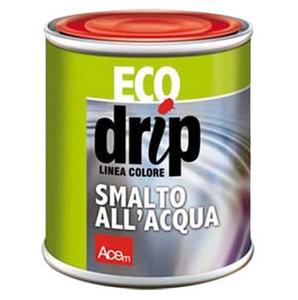Enamel is available in all existing colors (can be produced with a tintometer) and is generally used on iron, wood, wall (only in some cases), aluminum, plastic, etc.
The glazes can be based on a synthetic solvent (turpentine, nitro or synthetic diluent), or water based, that is water-dilutable acrylics which, compared to their predecessors, have a reduced odor almost to zero and many less harmful emissions.

SOLVENT ENAMEL
Advantages
is brighter than water based and can also be applied in extreme conditions, such as rusty iron, with results not obtainable with the other product family, which require cycles with oxidized iron more painting complexes.
Cons
solvent glazes, because they contain these elements, have more emissions. A concrete example: a solvent enamel has a cov (volatile organic compounds) of 400 g/L, one with water 130 g/L.
ENAMELLED WATER
Advantages
as already mentioned is almost completely odorless, it can also be applied internally without experiencing discomfort in the airways. Therefore it is highly recommended in every situation inside the house, such as walls, radiators etc.

Finally, water-based glazes have a good adhesion on notoriously difficult substrates such as aluminum, zinc and plastic, where solvent-based colleagues fail if not preceded by special background and preparation products.
Cons
do not have the same brightness as solvent-based products, even if they are defined as transparencies. On rusty iron it is appropriate to prepare the substrate adequately: anti-rust on metal varnished or on uncovered areas after the cleaning of the rust and the peeling paint.